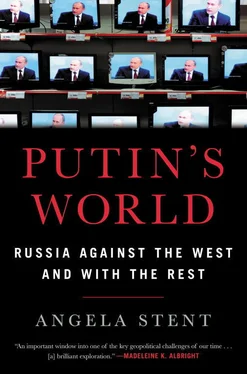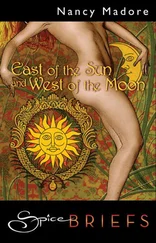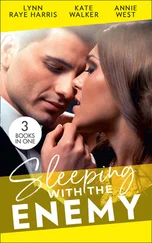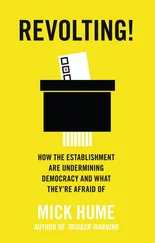The challenge for the US and Europe is to remain united in the era of Brexit and Trump, and rising populism on both sides of the Atlantic. The revival of trade disputes will inevitably weaken the commitment to the transatlantic relationship. The unity the US and Germany forged after Crimea is fraying, although the transatlantic sanctions regime remains. The US and Europe should prioritize maintaining a strong, effective alliance in the face of Russian attempts to divide NATO and prevent a coordinated response to its actions. Washington should refrain from actions that seek to undermine the alliance.
In the absence of a broader agreement between Moscow and the West, Russia will continue to nurse its growing list of grievances against the US and Europe. The West’s task for the rest of Putin’s tenure is to exercise strategic patience while containing Russia’s ability to disrupt transatlantic ties as it strengthens its defenses against Russian incursions. It must consistently and robustly push back against Russian interference in Western elections. But it must also be prepared for new challenges as Putin focuses on building up Russia’s artificial intelligence capabilities and deploying its considerable cyber prowess. Yet the US and Europe also should be prepared to reengage more actively with Russia should the Kremlin step back from its current confrontational policies and moderate its anti-Western stance. Off-ramps should always be available, and the West should take the long view, not expecting significant change to occur in the short term.
Putin’s Russia during the president’s fourth term could also likely bring new challenges. The Russian leader has been known to change course unexpectedly and take actions that few anticipated because they do not take his words seriously enough when he telegraphs his intentions. Russia is predictable until it is not, and the West may well confront unexpected developments during the next few years. Putin’s world is one in which Russia has returned to the global arena on all cylinders in pursuit of influence and acceptance. Putin’s strategy—if that is indeed the appropriate term for policies that often involve a rapid and shrewd response to opportunities created by Western disarray or inaction—has enabled Russia to reappear on the world stage in unanticipated ways that will continue to challenge the world.
In the two decades that have seen the rise of Putin’s world, several lessons have become clear. Isolating Russia and refusing to deal with it, however appealing that may appear to some, is not an option. On the other hand, pursuing “resets” intended to achieve qualitative improvements in ties to Putin’s Russia is, for the foreseeable future, a fruitless quest. Engagement must be realistic and flexible. Engage on issues of mutual interest and be prepared to be more forward-looking if Russia moderates its behavior. It is also important to remember that the Kremlin does not speak for all Russian citizens. The West should encourage a wider dialogue with Russians wherever possible. Above all, it should be prepared for surprises in dealing with Russia and agile enough to respond to them, just as Putin’s judo mastery has taught him how to prevail over an indecisive opponent. In Putin’s world, it is prudent to expect the unexpected.
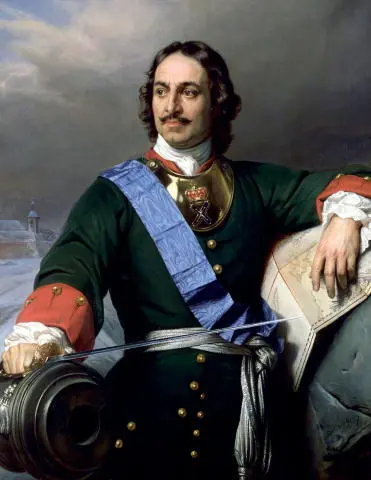
1. Peter the Great: One of Putin’s heroes was the first modernizing Tsar, who founded St. Petersburg to be “Russia’s window on the West.” Traveling incognito as “Peter Mikhailov” to Europe to learn its ways in the late seventeenth century, Peter on his return said “We need Europe for a few years. Then we will turn our back on it.”
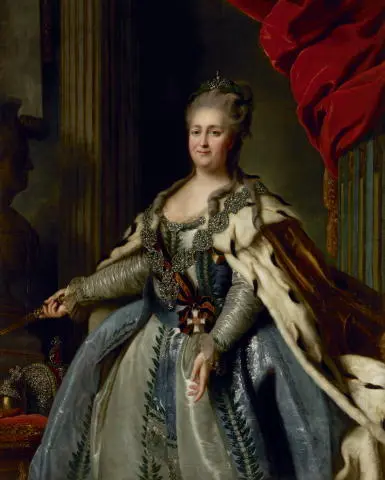
2. Catherine the Great: Catherine, the German princess who became the Tsarina and took Crimea from the Ottomans, understood Russia’s security dilemma: “That which stops growing begins to rot,” she said. “I have to expand my borders to keep my country secure.”
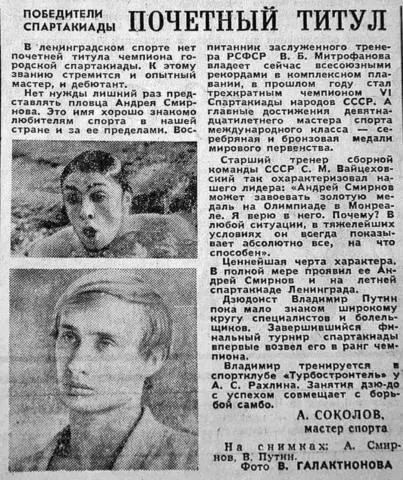
3. Putin the “Judoist”: In May 1976, the Leningrad evening paper hailed the 24 year-old “judoist Vladimir Putin” who had won a prestigious competition. Although he was “little known to the wider circle of specialists and fans”, his judo prowess had elevated him to the rank of champion.
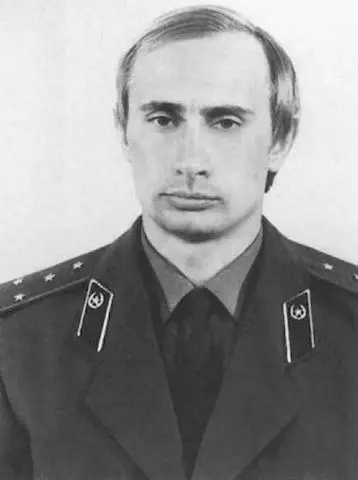
4. The Young KGB Case Officer: Putin was sent to Dresden in East Germany in 1985 to “work with people and information,” but the fall of the Berlin Wall in 1989 ended that phase of his career and left him with little more to show than the washing machine with which he drove back to Leningrad.
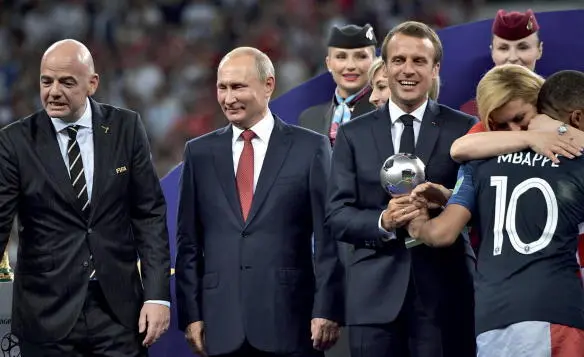
5. All Smiles: French President Emmanuel Macron, seeking better ties to Russia, beams as the French team wins the World Cup games in Moscow in 2018.
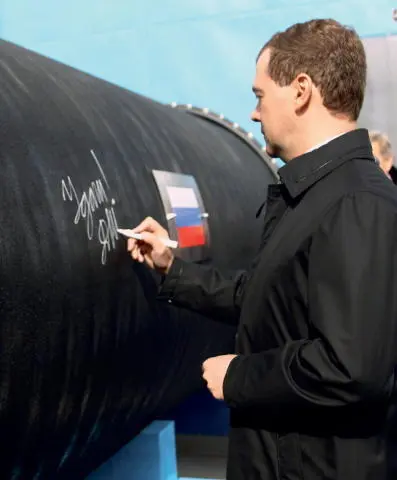
6. Russian Energy for Europe: Dmitry Medvedev signs the Nord Stream I pipeline carrying Russian gas under the Baltic Sea to Germany. The United States seeks to prevent the construction of a second line.
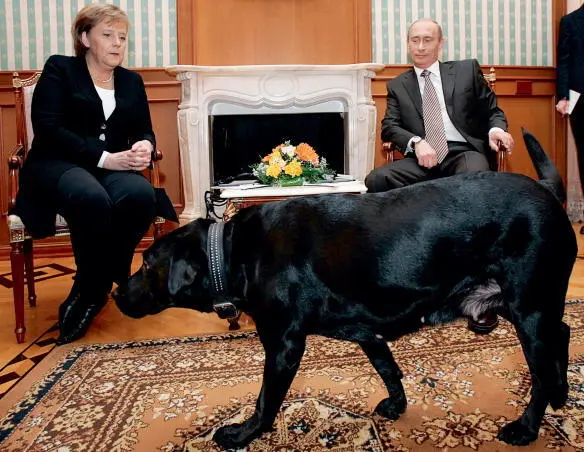
7. Angela Merkel and Koni: During one of his first meetings with German Chancellor Angela Merkel, Putin—knowing about her fear of dogs—allowed his Labrador Koni to greet her as she looked warily on. She never forgot the incident.
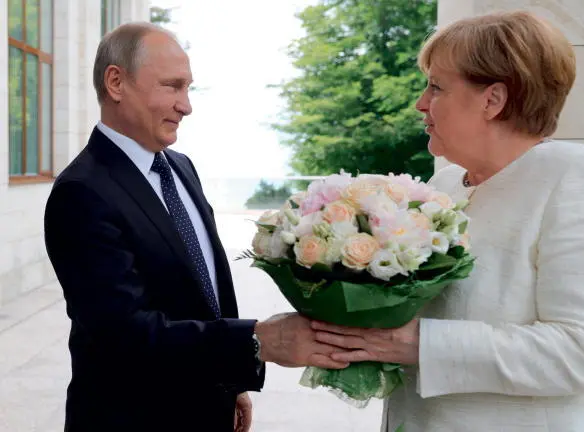
8. All Friends and Flowers: In 2018, Putin turned on the charm with Merkel, after Donald Trump had repeatedly criticized her and Germany. Putin sought to persuade her to back away from Germany’s commitment to the sanctions regime imposed after Russia’s annexation of Crimea and launch of a war in Ukraine’s Donbas region.
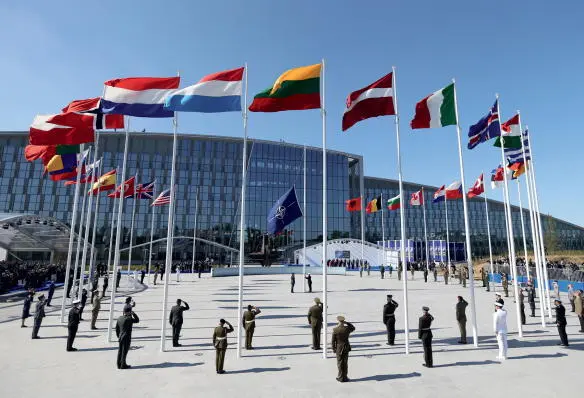
9. “The Main Opponent”: The new NATO headquarters in Brussels. Putin has described NATO as “the main opponent”—both a danger to Russia and an obsolete organization.
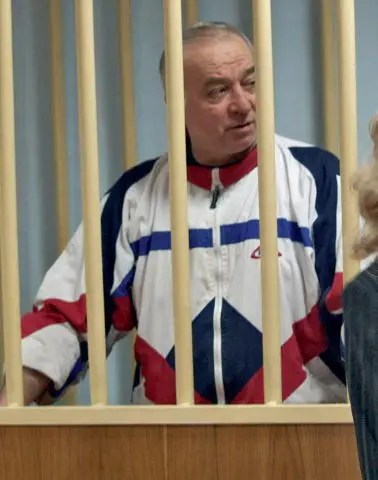
10. From Prison to Poison: Russian-Western relations reached a new low in 2018 after the attempted murder of former GRU double agent Sergei Skripal and his daughter Julia when they ingested the deadly nerve agent Novichok in Salisbury, England. Skripal had been part of an exchange for ten Russian “sleeper agents” in the United States, and the US expelled sixty Russian diplomats in response to the poisoning.

11. The Shanghai Cooperation Organization: Founded by Russia, China, and Central Asian states, originally designed to manage Sino-Russian relations in their common neighborhood—and pointedly excluding United States and Europe from membership.
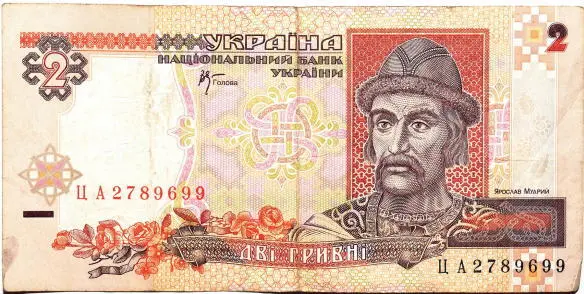
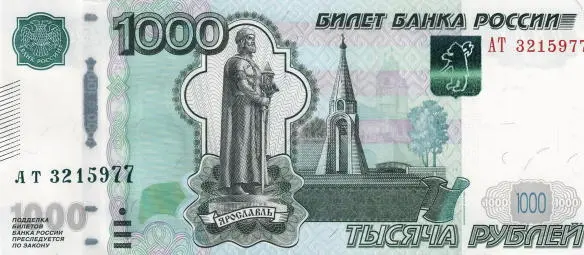
12. Dueling Banknotes: The Ukrainian two-hryvna and Russian thousand-ruble notes both carry a picture of Yaroslav the Wise, whom both Moscow and Kyiv claim as their founding father. Note the difference in facial hair: the traditional Russian beard versus the Ukrainian Cossack-style mustache.
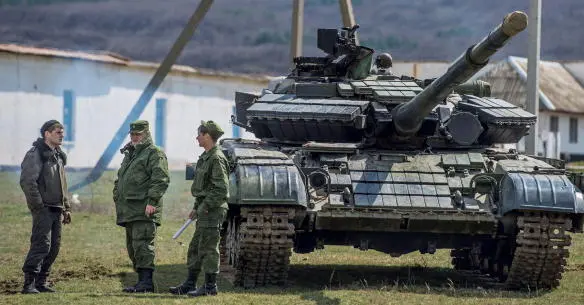
13. The Annexation of Crimea: “Little green men” from Russia with no insignia on their uniforms seized Ukrainian installations in Crimea in late February 2014. Shortly after, Russia annexed the peninsula, violating the 1994 Budapest agreement guaranteeing Ukraine’s sovereignty and territorial integrity. Moscow claimed the agreement was void because of what it called a “coup” in Kyiv.
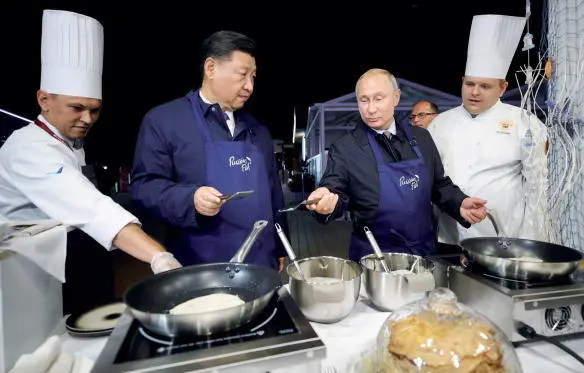
14. Let’s Make Bliny: After President Xi Jinping declared Putin his “new best friend” the new Russian-Chinese partnership was on full display in 2018 in Vladivostok, as the two leaders cooked Russian pancakes together.

15. Vostok 2018: In September 2018, Chinese troops participated for the first time in the Russian Vostok (East) military exercises—the largest war games in the Soviet space since the Cold War days of the early 1980s.
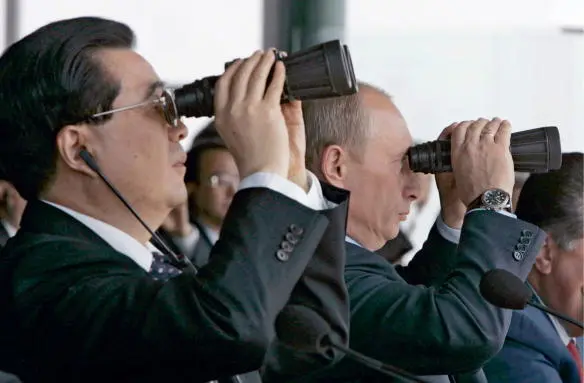
16. Vostok 2018: Putin watches the maneuvers with the Chinese Defense minister Wei Fenghe, saying Russia is “ready to protect its sovereignty, security, and national interests.” The joint maneuvers represent a tightening of the Russian-Chinese strategic partnership.
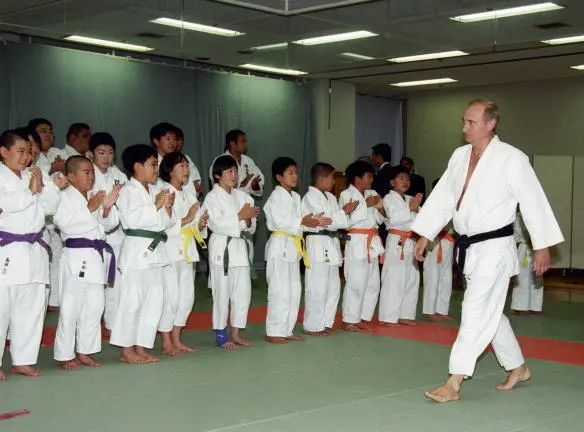
17. The Politics of Judo: Putin’s prowess at judo has given him a unique relationship with Japan. Here he gets ready to “hajime”—to spar with Japanese judo students.
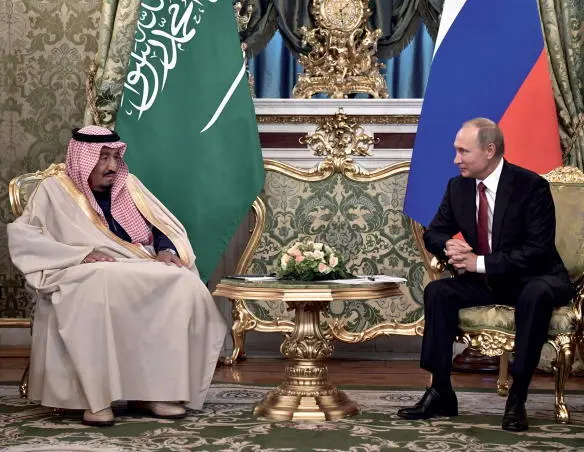
18. New Middle Eastern Partners: Putin with Saudi Arabia’s King Salman on his first visit to Moscow. The two countries, which had no diplomatic relations during the Cold War, agreed to coordinate oil production and cooperate on investments.
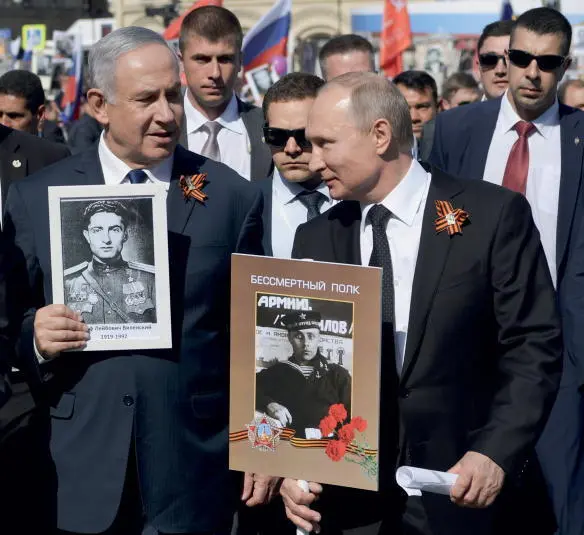
19. Another New Partner: Israel. Benjamin Netanyahu, frequent visitor to Moscow, marches in the “Immortal Regiment” parade with Putin on Victory Day, May 9, 2018, both holding photographs of World War Two veterans—in Netanyahu’s case, a Soviet emigré to Israel.
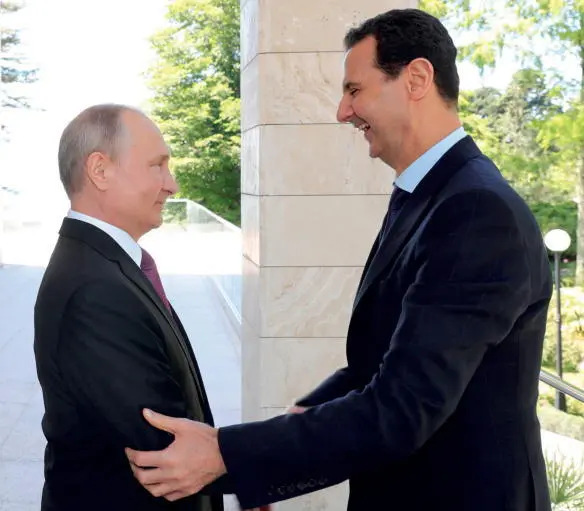
20. The Syrian Operation: Russia began its military campaign in Syria in 2015 to support Bashar al-Assad, who depends on Russia and Iran to keep him in power.
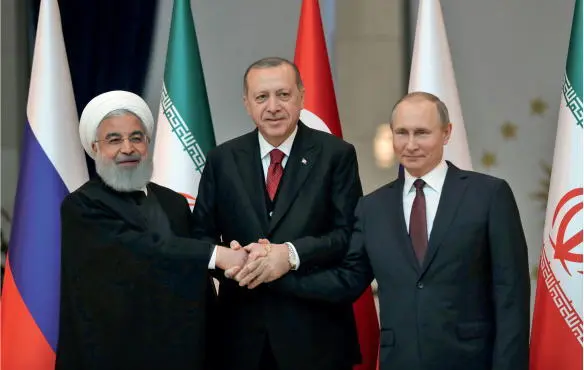
21. Putin the Peacemaker? Putin meets Iranian President Hassan Rouhani and Turkish President Recep Tayyip Erdogan to discuss the war in Syria.
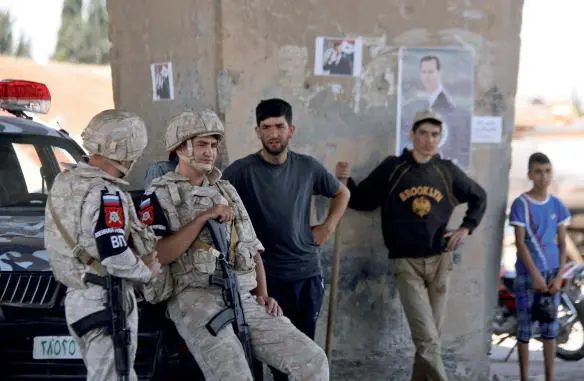
22. Russian Soldiers in Syria: As a result of its intervention, Russia has modernized its two military bases in Syria—the air base in Khmeimim and the once-dilapidated naval base in Tartus—but seeks to “deconflict” with the US in the crowded air space above Syria.
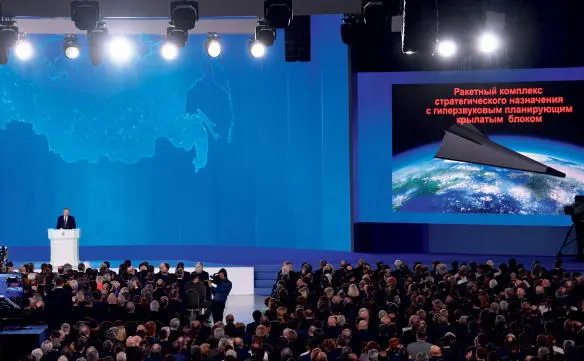
23. Putin’s “Super Weapon”: In his Address to the Nation, Putin unveiled several new weapons, including a hypersonic missile—5 times the speed of sound—that could evade US missile defenses and reach Florida within minutes.

24. Putin Passes the Ball: At the July 2018 Helsinki summit, held the day after the World Cup ended, Trump and Putin agreed to improve ties, but the toxicity of “Russia” in domestic US politics and investigations into Russian meddling in US elections blocked that move.
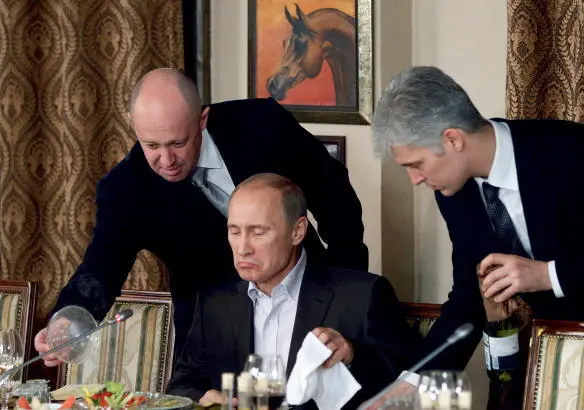
25. Putin’s Versatile “Chef”: A busy man, Evgeny Prigozhin (l) owns top-flight restaurants. He also owns the St.Petersburg-based Internet Research Agency—indicted by Special Counsel Robert Mueller for meddling in the 2016 US presidential election—and the military contractor Wagner, whose troops have clashed with US forces in Syria.
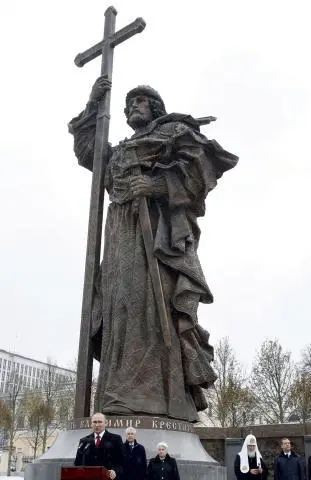
26. Putin’s Role Models: On Church Day in Moscow, Putin speaks under the giant statue of his namesake Prince Vladimir, who converted Kievan Rus to Christianity.

27. And in front of the statue of his hero Peter the Great on Navy Day in St. Petersburg, where Putin announced plans for 26 new warships.
Читать дальше
